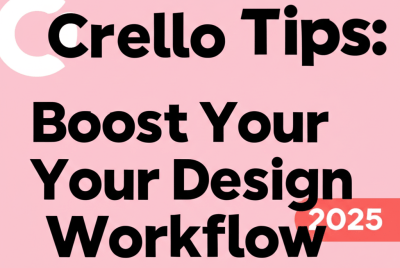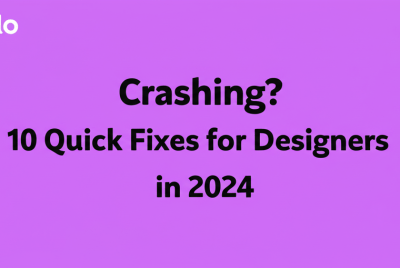“Your work is poor.” “Your work is crap.” “Do this to make it better.” We’ve all faced these biting criticisms—comments that can break you down, challenge you, or inspire growth. Whether you’re a designer, writer, or entrepreneur, criticism is as integral to your journey as basic color principles are essential to stunning works.
Handling criticism confidently is more than separating emotions from feedback; It requires understanding the underlying motivations behind the criticism, distinguishing between helpful and harmful feedback, and developing strategies to leverage it for personal and professional growth.
Here’s how to navigate criticism like a pro, drawing insights from psychology, design, and entrepreneurship.
Firstly Why Does Criticism Hurt?

Criticism often stings because of our natural desire for social acceptance. Psychologist Dr. Kristin Neff explains that negative feedback can activate our “fight or flight” response, creating feelings of vulnerability that impact our self-esteem, and create common anxiety disorders for designers. This reaction is particularly intense for creatives, who pour personal expression into their work, making feedback feel like a judgment of their identity.
Psychology Today reports that this emotional reaction isn’t unique to artists but is intensified when our work reflects who we are. Understanding the root of this pain can help you prepare to analyze feedback more objectively. From here, it becomes essential to distinguish between truly constructive criticism and that which isn’t, to decide which feedback will help you grow.
2. Distinguishing Between Helpful vs. Hateful Criticism
Not all feedback serves the same purpose, and learning to distinguish constructive from harmful criticism is a valuable skill. Dr. Brené Brown notes that constructive criticism focuses on improvement, while hateful feedback can reflect the critic’s insecurities rather than the work itself. Constructive feedback is specific, actionable, and usually comes from those who genuinely want to support your growth.
For example, helpful criticism in design might be, “Consider balancing the color contrast here for better readability.” In contrast, unhelpful comments like “This design is awful” provide no direction for improvement. Recognizing this distinction lets you focus on feedback that truly benefits your craft. Once this is clear, it’s easier to understand the broader reasons why criticism exists and how it can ultimately serve a positive purpose.
Here are four signs of unhelpful, or “bad,” criticism:
- Lacks Specifics: Vague comments like “This doesn’t work” offer no clear direction. Constructive feedback should provide specific, actionable insights.
- Feels Personal, Not Professional: Feedback that attacks the character rather than the work, like “You’re not cut out for this,” is unhelpful. Constructive criticism focuses on the work itself.
- Lacks Credibility: Feedback from those with little relevant expertise may be less valuable. Experienced peers generally offer more reliable, technically insightful feedback.
- Inconsistent with Prior Feedback: Sudden contradictions to previous feedback can signal bias. Reliable criticism remains consistent and aligned with agreed-upon standards.
3. Why Criticism Exists

Criticism, in its most constructive form, is intended to encourage growth. According to psychologist Albert Bandura’s Social Learning Theory, feedback is a central part of personal development, as it guides us in identifying areas to improve. In professional settings, constructive criticism is essential for maintaining standards, honing skills, and advancing careers smartly.
The American Journal of Psychology suggests that while some criticism may stem from negative motives, most feedback—especially from trusted sources—is a vital tool for learning. By understanding that criticism often aims to support your growth, you can start to see it as a collaborative effort toward improvement rather than a personal attack. This perspective is especially important for graphic designers, who frequently receive feedback from clients, peers, and mentors.
Criticism for Graphic Designers: What Forms Does It Take?
Graphic designers often face unique types of criticism that range from specific design critiques to subjective preferences. Industry legend Paul Rand, known for his minimalist approach, was no stranger to critiques from peers who favoured more elaborate styles. Today the internet provides access to critique work based on projects of others thus designers increasingly encounter feedback on aspects like the right choice of typography, colour, and layout, with comments often reflecting both professional critique and personal taste.
Effective designers learn to separate subjective opinions from constructive advice. By understanding common forms of design criticism, designers can respond thoughtfully, taking in feedback while preserving their creative vision. To manage such varied feedback, having actionable strategies becomes invaluable.
Top 3 Ultimate Tips for Managing Criticism

To handle criticism with confidence and grace, here are four strategies:
- Separate Emotion from Feedback
Disassociating yourself from work helps you extract the value of constructive feedback without feeling personally attacked. Psychiatrist Dr. David Burns advises taking a step back to analyze feedback objectively, without emotional attachment. Mindfulness exercises or journaling your initial reaction can help you process feelings before engaging with the feedback itself. The key step is to accept that creative works are separate from you – the creative. - Seek Context and Specifics
Actionable feedback should offer clarity. Dr. Carol Dweck suggests seeking specifics when feedback is vague or generalized. Asking questions like, “Could you clarify which part of this needs improvement?” gives you insight into where to focus for growth rather than feeling overwhelmed by broad criticisms. - Refocus on Long-Term Goals
As entrepreneur Seth Godin recommends, view criticism as a stepping stone on your journey to mastery. This growth-oriented mindset frames criticism as feedback on your progress rather than a measure of your worth, helping you focus on long-term improvement over short-term reactions.
The Never Ending Process

Note that as creatives, particularly business creatives, products are meant to be criticized constantly.
Learning how to manage this inevitable process is key to sailing through the design business. The true power lies in objectivity; When you view feedback through a balanced lens you protect your creative integrity and make informed choices about which suggestions to act on.
This objective approach enables you to take criticism in stride, welcoming feedback as a tool rather than a threat.
Want to see the true power of criticism? Check out our spotlight series on how my boss yelled at me and I yelled back.

